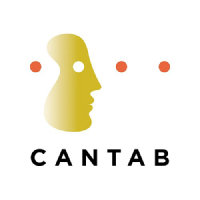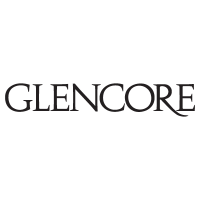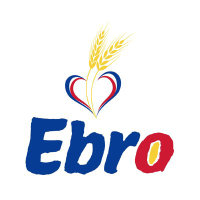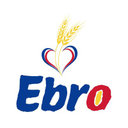
Zealand Pharma A/S
CSE:ZEAL


| US |

|
Johnson & Johnson
NYSE:JNJ
|
Pharmaceuticals
|
| US |

|
Berkshire Hathaway Inc
NYSE:BRK.A
|
Financial Services
|
| US |

|
Bank of America Corp
NYSE:BAC
|
Banking
|
| US |

|
Mastercard Inc
NYSE:MA
|
Technology
|
| US |

|
UnitedHealth Group Inc
NYSE:UNH
|
Health Care
|
| US |

|
Exxon Mobil Corp
NYSE:XOM
|
Energy
|
| US |

|
Pfizer Inc
NYSE:PFE
|
Pharmaceuticals
|
| US |

|
Palantir Technologies Inc
NYSE:PLTR
|
Technology
|
| US |

|
Nike Inc
NYSE:NKE
|
Textiles, Apparel & Luxury Goods
|
| US |

|
Visa Inc
NYSE:V
|
Technology
|
| CN |

|
Alibaba Group Holding Ltd
NYSE:BABA
|
Retail
|
| US |

|
JPMorgan Chase & Co
NYSE:JPM
|
Banking
|
| US |

|
Coca-Cola Co
NYSE:KO
|
Beverages
|
| US |

|
Walmart Inc
NYSE:WMT
|
Retail
|
| US |

|
Verizon Communications Inc
NYSE:VZ
|
Telecommunication
|
| US |

|
Chevron Corp
NYSE:CVX
|
Energy
|
Utilize notes to systematically review your investment decisions. By reflecting on past outcomes, you can discern effective strategies and identify those that underperformed. This continuous feedback loop enables you to adapt and refine your approach, optimizing for future success.
Each note serves as a learning point, offering insights into your decision-making processes. Over time, you'll accumulate a personalized database of knowledge, enhancing your ability to make informed decisions quickly and effectively.
With a comprehensive record of your investment history at your fingertips, you can compare current opportunities against past experiences. This not only bolsters your confidence but also ensures that each decision is grounded in a well-documented rationale.
Do you really want to delete this note?
This action cannot be undone.

| 52 Week Range |
310.8
805
|
| Price Target |
|
We'll email you a reminder when the closing price reaches DKK.
Choose the stock you wish to monitor with a price alert.

|
Johnson & Johnson
NYSE:JNJ
|
US |

|
Berkshire Hathaway Inc
NYSE:BRK.A
|
US |

|
Bank of America Corp
NYSE:BAC
|
US |

|
Mastercard Inc
NYSE:MA
|
US |

|
UnitedHealth Group Inc
NYSE:UNH
|
US |

|
Exxon Mobil Corp
NYSE:XOM
|
US |

|
Pfizer Inc
NYSE:PFE
|
US |

|
Palantir Technologies Inc
NYSE:PLTR
|
US |

|
Nike Inc
NYSE:NKE
|
US |

|
Visa Inc
NYSE:V
|
US |

|
Alibaba Group Holding Ltd
NYSE:BABA
|
CN |

|
JPMorgan Chase & Co
NYSE:JPM
|
US |

|
Coca-Cola Co
NYSE:KO
|
US |

|
Walmart Inc
NYSE:WMT
|
US |

|
Verizon Communications Inc
NYSE:VZ
|
US |

|
Chevron Corp
NYSE:CVX
|
US |
This alert will be permanently deleted.
Zealand Pharma A/S
Zealand Pharma A/S is a Danish biotechnology company that has carved a niche in the medical field by focusing on the design and development of innovative peptide-based medicines. Established in 1998 and headquartered in Copenhagen, the company is driven by a singular mission: to improve patients' lives through impactful treatments. Zealand's expertise lies in peptide therapeutics, a compelling segment of biopharmaceuticals due to their ability to mimic biological processes with high specificity and efficacy. The company has a keen focus on addressing unmet medical needs, particularly in the treatment of metabolic and gastrointestinal diseases. With a robust pipeline that ranges from early-stage research to late-stage clinical trials, Zealand Pharma leverages its proprietary technology to discover and develop novel pharmaceuticals that can be game-changers in their respective therapeutic areas.
Zealand Pharma's business model centers around the development and commercialization of its proprietary medicines, both independently and through strategic partnerships. By collaborating with larger pharmaceutical companies, Zealand enhances its global commercialization capabilities and mitigates the financial risks inherent in drug development. For instance, the company has partnered with multinational corporations, allowing it to tap into resources for advanced research, regulatory processes, and worldwide distribution systems. Revenue streams are diversified through milestone payments, royalties, and direct sales, ensuring a steady inflow of cash that supports continued innovation. This strategic approach not only sustains its operations but also propels its mission of delivering transformative healthcare solutions. In essence, Zealand Pharma thrives at the confluence of science and strategy, driving both its financial health and its contributions to the biopharmaceutical landscape.

Zealand Pharma A/S is a Danish biotechnology company that has carved a niche in the medical field by focusing on the design and development of innovative peptide-based medicines. Established in 1998 and headquartered in Copenhagen, the company is driven by a singular mission: to improve patients' lives through impactful treatments. Zealand's expertise lies in peptide therapeutics, a compelling segment of biopharmaceuticals due to their ability to mimic biological processes with high specificity and efficacy. The company has a keen focus on addressing unmet medical needs, particularly in the treatment of metabolic and gastrointestinal diseases. With a robust pipeline that ranges from early-stage research to late-stage clinical trials, Zealand Pharma leverages its proprietary technology to discover and develop novel pharmaceuticals that can be game-changers in their respective therapeutic areas.
Zealand Pharma's business model centers around the development and commercialization of its proprietary medicines, both independently and through strategic partnerships. By collaborating with larger pharmaceutical companies, Zealand enhances its global commercialization capabilities and mitigates the financial risks inherent in drug development. For instance, the company has partnered with multinational corporations, allowing it to tap into resources for advanced research, regulatory processes, and worldwide distribution systems. Revenue streams are diversified through milestone payments, royalties, and direct sales, ensuring a steady inflow of cash that supports continued innovation. This strategic approach not only sustains its operations but also propels its mission of delivering transformative healthcare solutions. In essence, Zealand Pharma thrives at the confluence of science and strategy, driving both its financial health and its contributions to the biopharmaceutical landscape.
Strong Revenue: Zealand Pharma reported DKK 9.1 billion in revenue for the first 9 months of 2025, mainly from an upfront payment from Roche.
Pipeline Progress: Key milestones reached in Phase II trials for petrelintide and Phase III trials for survodutide, with major data readouts expected in the first half of 2026.
Strategic Focus: The company paused dapiglutide development to focus resources on programs with higher clinical differentiation and commercial potential.
Financial Position: Cash position strengthened to DKK 16.2 billion, boosting capital preparedness for ongoing R&D and partnership commitments.
Obesity Market Strategy: Zealand and Roche aim to offer well-tolerated obesity therapies that address patient needs over maximizing weight loss, positioning petrelintide as a best-in-class amylin analog.
Guidance Updated: Full-year net operating expense guidance narrowed to DKK 2-2.3 billion, reflecting portfolio adjustments.










































